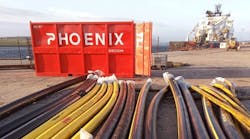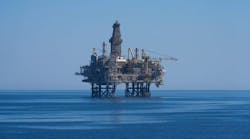David Paganie
Managing Editor
HOUSTON -- Shell is seeking industry collaboration to develop technology and resources to exploit the Arctic where an estimated 25% of the world's undiscovered reserves remain, said Mike Dyson, Shell's technical manager for Production Systems R&D. Dyson spoke to a gathering at its booth at the 2008 Offshore Technology Conference in Houston.
"Our strategy is to work with the local arctic population and collaborate with industry partners," he said. Some of the challenges in the Arctic, Dyson explained, include ice loading, the area's remoteness, freezing temperatures, and permafrost in the milder season.
Shell's experience in subsea and deepwater projects will give it an edge in arctic developments, Dyson said. He pointed to the company's work on Ormen Lange in the Norwegian Sea and Sakhalin I and II off Sakhalin Island. "Ormen Lange is the kind of development that has lots of similarities to what we want to do in the Arctic," Dyson said. "Subsea is very important to arctic development." There, however, the subsea trees would be installed below the seabed to avoid icebergs, which can dip down to 50 m (164 ft) below the water line, he said.
On Sakhlin I, Shell uses a fixed drilling and production platform called Molikpaq, which can operate only six months of the year because of ice loading. The company installed sensors on the platform to gather data on ice activity. Shell also has carried out a number of motel tests on various platform designs. With this intelligence, the company can predict the various types of ice loads, Dyson said. Shell has a weather advisory center to help track the ice. Meanwhile, the company plans to launch trials this year on aerial surveys with sensors to gather additional ice data.
In 2007, Shell with partner Eni carried out tests on seismic surveying through ice with geophones above and below the surface, which generated readable results, Dyson said. But the ice must be fixed for the process to work, he added.
Shell was the highest bidder on 275 blocks in this year's Chukchi Sea Lease Sale 193. The company bid over $2 billion. The last well drilled in the region was in 1991, according to the MMS.
05/08/2008




